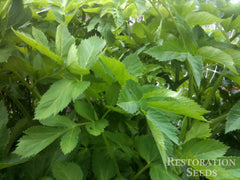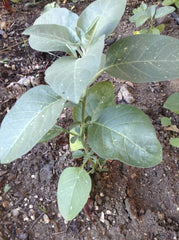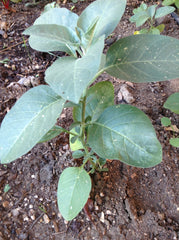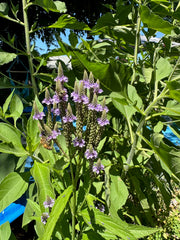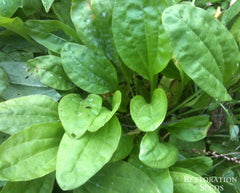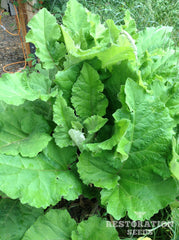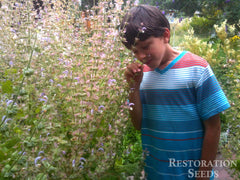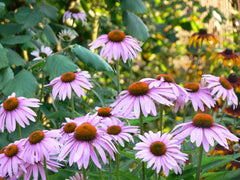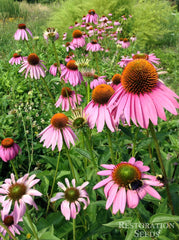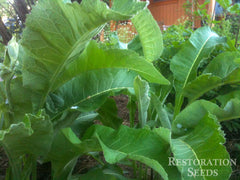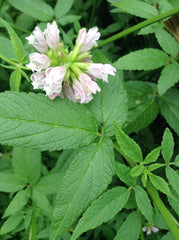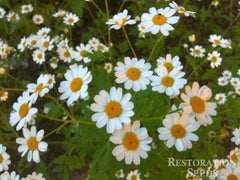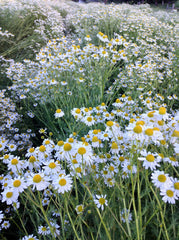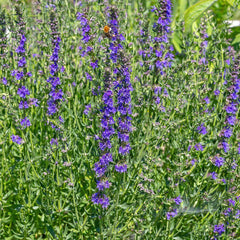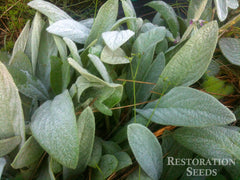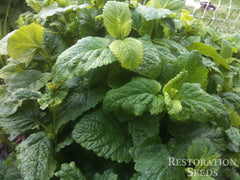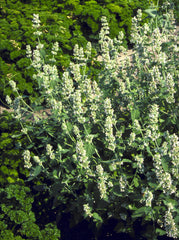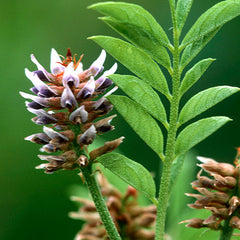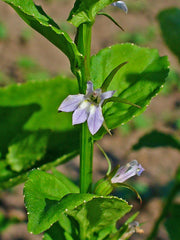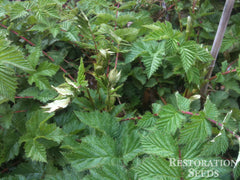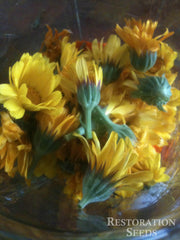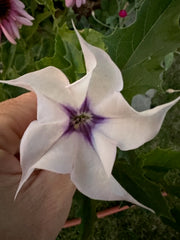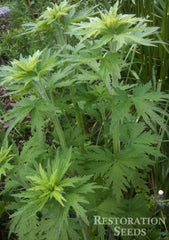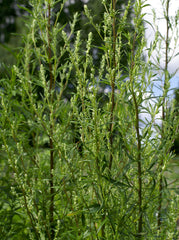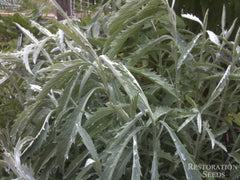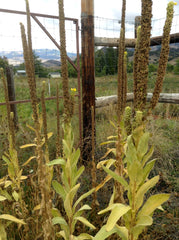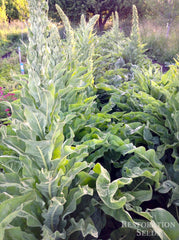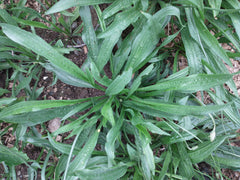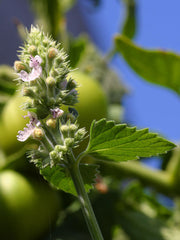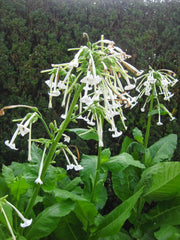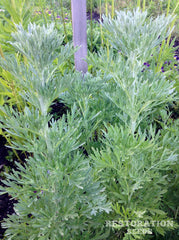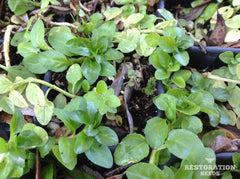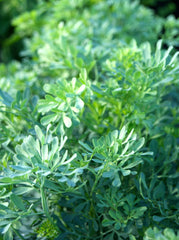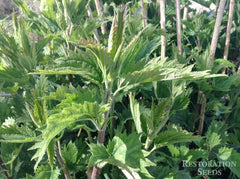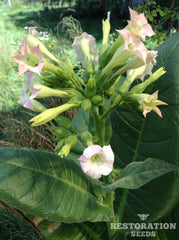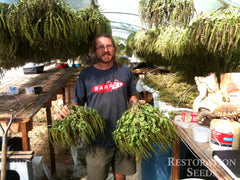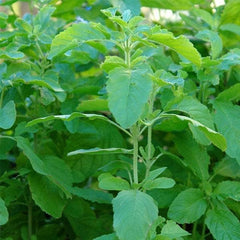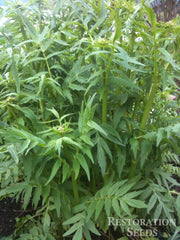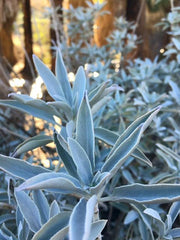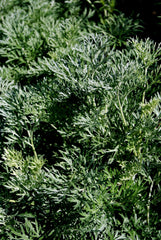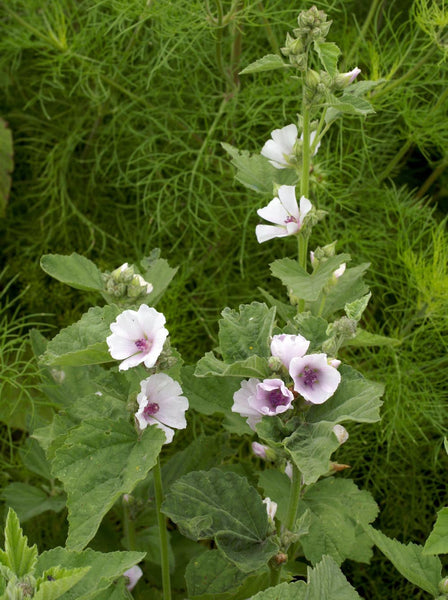Marsh Mallow
Althaea officinalis
HOW TO GROW MARSH MALLOW
Best sown as soon as it is ripe in late summer, 5–6 seed per plant. Germination is irregular, often several months. Also direct so outdoor in the fall in cold frame. Start indoors 4–6 weeks before last frost. Stratify 4–6 weeks if sowing indoors. Grows wild along the edges of swamps and other wet areas. Soil pH 6.1-7.8. Hardiness zones 3-8. Perennial.
Days from maturity calculated from the date of seeding. Average 14,200 seeds per ounce.
Planting Depth surface requires light
Soil Temp. Germ. 68˚F stratify
Days to Germ. 30–60
Plant Spacing 6–8”
Row Spacing 24–36”
Full Sun, Wet Climate
Days from maturity calculated from the date of seeding. Average 14,200 seeds per ounce.
Planting Depth surface requires light
Soil Temp. Germ. 68˚F stratify
Days to Germ. 30–60
Plant Spacing 6–8”
Row Spacing 24–36”
Full Sun, Wet Climate
- 200 Seeds$4.10
- 2000 Seeds$22.50
Marsh Mallow is an attractive, upright, bushy plant with a tap root, and white, rose tinged flowers. This perennial flowers in its first year growing. It’s used medicinally as a mucilaginous herb for coughs, specifically for soothing irritation and inflammation of the throat, eyes, and lungs. It stimulates the immun...
Marsh Mallow is an attractive, upright, bushy plant with a tap root, and white, rose tinged flowers. This perennial flowers in its first year growing. It’s used medicinally as a mucilaginous herb for coughs, specifically for soothing irritation and inflammation of the throat, eyes, and lungs. It stimulates the immune system and helps prevent and repair ulcerations of the gastric mucosa and duodenum. It’s also helpful as an herb for the urinary tract system. The entire plant, particularly the root, abounds with a mild mucilage. Beautiful with hollyhocks in the garden. Also known as Marshmallow. Tags: Certification: Organic.
Indigenous to Africa, which is used as a medicinal plant and ornamental plant. A confection made from the root since ancient Egyptian time evolved into today's marshmallow treat. Most of the mallows have been used as food, and are mentioned by early classic writers with this connection. Mallow was an edible vegetable among the Romans; a dish of marsh mallow was one of their delicacies.
The common mallow is frequently called "marsh mallow" by country people, but the true marsh mallow is distinguished from all the other mallows growing in Great Britain by the numerous divisions of the outer calyx (six to nine cleft), by the hoary down which thickly clothes the stems and foliage, and by the numerous panicles of blush-colored flowers, paler than the common mallow.
Indigenous to Africa, which is used as a medicinal plant and ornamental plant. A confection made from the root since ancient Egyptian time evolved into today's marshmallow treat. Most of the mallows have been used as food, and are mentioned by early classic writers with this connection. Mallow was an edible vegetable among the Romans; a dish of marsh mallow was one of their delicacies.
The common mallow is frequently called "marsh mallow" by country people, but the true marsh mallow is distinguished from all the other mallows growing in Great Britain by the numerous divisions of the outer calyx (six to nine cleft), by the hoary down which thickly clothes the stems and foliage, and by the numerous panicles of blush-colored flowers, paler than the common mallow.
Learn More
Meet Your Farmer
We promote fair trade, organic practices and environmental responsibility throughout the Restoration Seeds supply chain. Below are the family farmers and seed suppliers who bring our open pollinated seeds to you.
Banyan Farm
Certified Organic by Oregon Tilth
Seed grower since


Banyan Farm is a 20-acre certified organic farm located in Williams, Oregon. We practice sustainable and regenerative agricultural practices, including a polyculture design, crop rotation, and composting, all of which support overall biodiversity. All vegetables and herbs grown on our farm are ethically grown, harvested, and filled with the vitality of the land and the people who nurture them. Our work is an invitation to join us in building a healthy, resilient community. In addition to growing vegetables and both Ayurvedic and western herbs, our farm hosts education through Banyan Botanicals’ Living Ayurveda Internship (LAI). We also work with our community by selling at local Growers Markets.
Reviews
